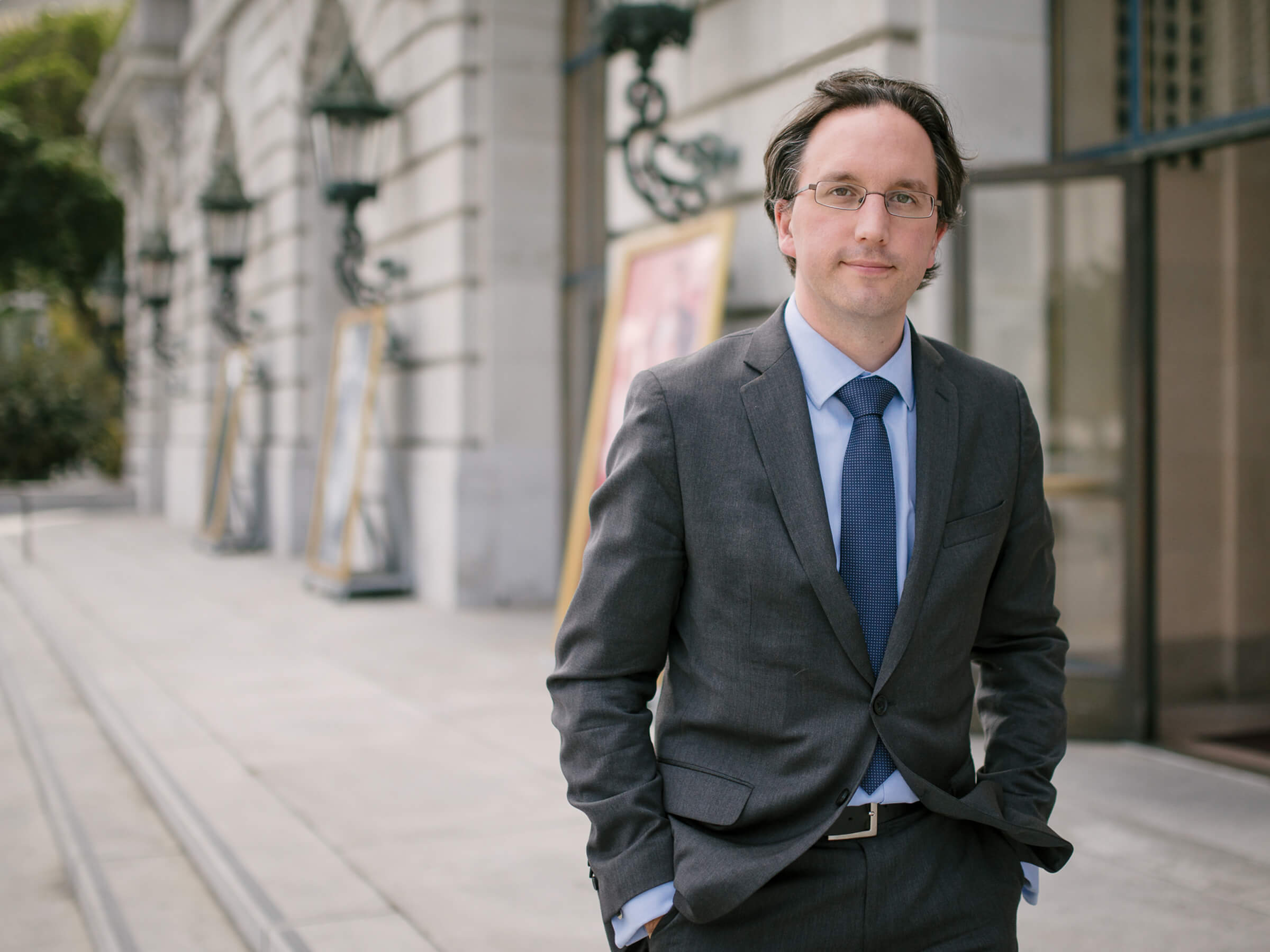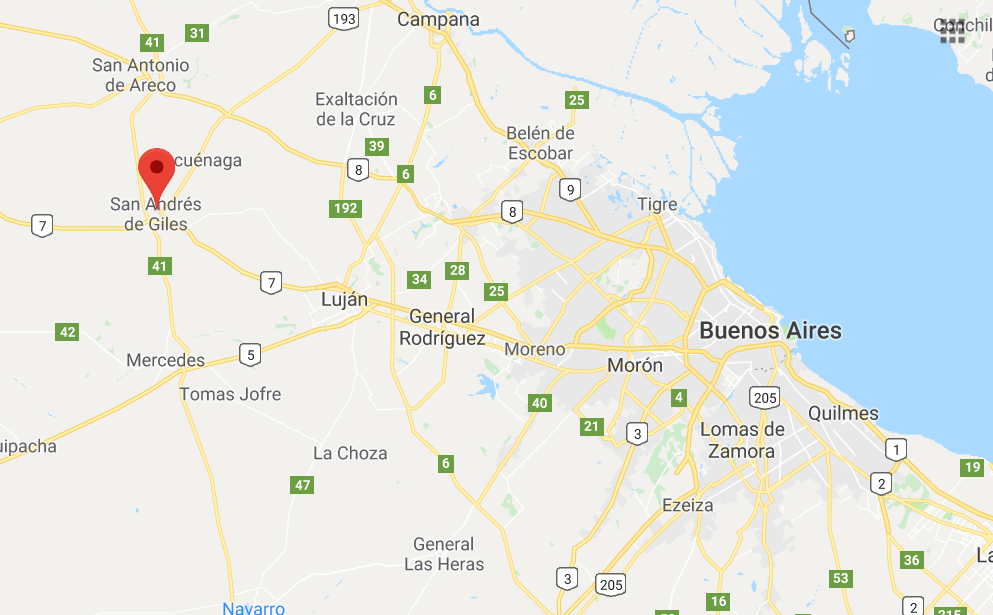Backstage with Matthew: An Argentine Journey

The setting is the same for both operas—the Caminito Street in La Boca: one of the most iconic scenes in the city.

On one half of the stage are the shops of the Caminito—very much a representation of the photo you see here. The other side of the stage is a tenement building with a lively mural taken from a very close street opposite Parque Lezama. It immediately evokes the vibrancy, passions and tensions of Pagliacci.

This restaging will be undertaken by a wonderful member of the San Francisco Opera directing staff, Jose Maria Condemi. What is particularly impactful is that Jose Maria grew up just outside Buenos Aires, and so he brings all of the nuance and understanding that helps make this production such a vivid portrayal of character and place.

Jose Maria grew up in the small town of San Andrés de Giles, about an hour west of Buenos Aires. (By chance my wife and I vacationed close by back in 2006!) As Jose Maria recounts the stories of his youth, it’s clear how vividly the world of this production is painted in his own experiences. The idea of a small community with a deep sense of honor and tradition; a place where family friendships extend across generations; a world in which everyone knew the mayor, everyone knew the doctor; a town that appears very content on the surface, but that has layers of intrigue happening underneath. The kind of place where two cousins can be in a feud for years, and then make up with a handshake as though nothing had ever happened.

This is very much the world of this Cavalleria / Pagliacci. Everyone is involved in everyone else’s business. That can be a negative but it also means that everyone also cares for each other, takes an interest in others’ wellbeing, and extends a hand when it is needed. That sense of interconnectedness underpins a seamless integration of characters between both operas. José Cura takes these two operas and fuses them together into one community going through two massive tragedies just six months apart. Pagliacci begins with a funeral procession of Turridu, who was just killed at the end of Cavalleria. Santuzza, who finds out that she’s pregnant in Cavalleria, is seen six months pregnant in Pagliacci. The young lover in Pagliacci, Silvio, is the bartender in Mamma Lucia’s bar in in Cavalleria. And Mamma Lucia is the matriarch of Cavalleria, but she is also here the matriarch of Pagliacci—she is the soul of this community, and it is she who bewails at the end of the evening “La commedia è finite” (“The Comedy is over!”). She has lost both a son and an employee to unnecessary violence, and she says to the community “Enough!” As Jose Maria notes, she implores the community to find a new way to resolve their problems. The knife can no longer be the answer.
And in this double tragedy, the community of the chorus becomes a powerful, almost primal entity, entrenched as a community steeped in values and traditions but unable to learn from what has happened. The way that this production binds the two operas together gives you a painful sense of compounded sorrow. There will be no bows at the end of the first opera. Rather we never leave the Caminito Street—we are fully vested in the reality of its heartbreak.

Jose Maria’s own journey to San Francisco Opera from Argentina was a fascinating one. He had moved to Buenos Aires where he was studying to be a doctor and was three years into medical school. But something didn’t feel quite right. While walking along down the wide expanse of the Aveninda Corrientes one day he heard a recording of what turned out to be Carmen wafting out of a record store. Jose Maria, who didn’t have a background at all in opera, was transfixed. He bought the recording (Agnes Baltsa and Plácido Domingo) and all but wore out the recording and the booklet, such was the passion with which he devoured it. He gradually bought more and more recordings and eventually heard about a directing program at the Teatro Colón, the great opera house in Buenos Aires. He was accepted and, with that under his belt, he began to look to Europe and his Italian heritage for his next chapter. But fate intervened and he read an advertisement in Opera News for a directing program at Cincinnati Conservatory of Music and he moved there in 1989.

All of these twists and turns ultimately led him to apply for the Merola Program, into which he was accepted, becoming the first ever (and first of only two ever) Adler Fellow stage directors at San Francisco Opera in 2001–02. Directing engagements have abounded since and for SFO Jose Maria has helmed works like Butterfly, Tosca, Così fan tutte, Faust, Ballo in Maschera and others, as well as assistant directing on scores of productions. He is also Director of Opera and Musical Theater at San Francisco Conservatory of Music. His impact on this community is huge.

Despite his international journey, Jose Maria’s roots remain very much in Buenos Aires. His family is still there, and as he talks about this production, you feel the intense connection to place that this production creates for him. The production incorporates the tango world of Carlos Gardel (who recorded a tango based on the Caminito Street), and Jose Maria remembers Buenos Aires when tango was not the wildly touristy attraction that it is now. La Boca was likewise not a tourist attraction but rather a very authentic place (he paints an analogy to Haight Ashbury in its temperament). La Boca was a jumble of immigrant housing, colors jostling against each other because no one could afford to buy a consistent paint color.


I asked Jose Maria if he tries to instill the flavor of the real Boca into the cast. He says that that would feel too didactic. Rather he tries to draw on references to similar worlds from each of their own experiences, whether that be Haight Ashbury, or a small town in the Midwest. He is trying to get to the essence of what it means to be trapped in the drama of a small town.

I hope that when the curtain raises on this production you will feel transported into this amazing world of passionate intrigue and feel the intensity of life lived on the edge within a small community. It’s the intensity that the composers of these operas, Mascagni and Leoncavallo, were looking to create and through the artistry of José Cura, Jose Maria Condemi, and our stunning cast, we hope to take you there.

